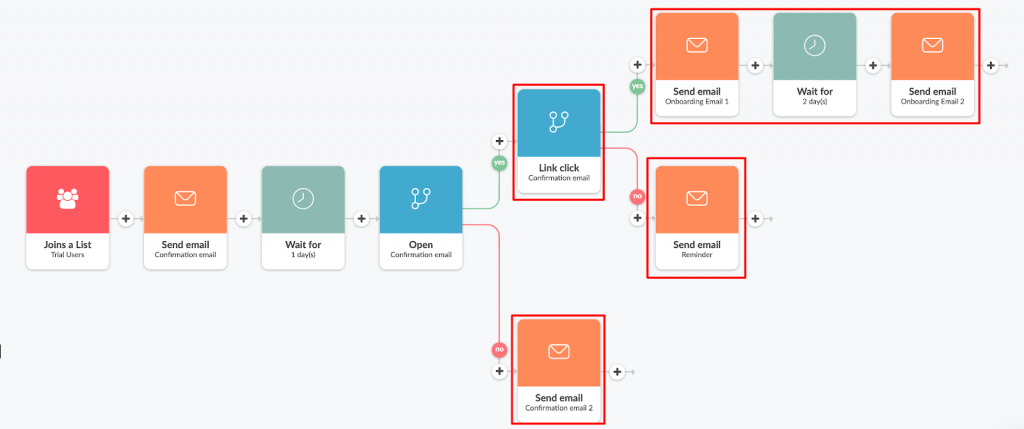You can earn a steady income without constant effort through recurring affiliate programs. Most beginners waste time promoting one-time products (such as shoes and e-books) missing out on the long-term benefits of recurring offers.

For instance, promoting subscription-based services like website builders or web hosting services can yield ongoing commissions. According to Forbes, the global subscription services industry is expected to grow by $1.5 trillion in 2025, so there’s a huge opportunity to build a profitable business.

A success story is Pat Flynn, who earns substantial recurring income from promoting Circle Community Network, showcasing the potential of focusing on recurring programs.
Recurring Affiliate Marketing: Pros and Cons
Below are the key pros and cons of recurring affiliate programs to help you make well-informed decisions.
| Pros | Cons |
| Provides consistent earnings over time | Takes time to build a customer base |
| Each customer can generate multiple commissions | Income relies on customers retaining their subscriptions |
| Easily scalable and more subscribers join and renew | Initial commissions may be smaller compared to one-time offers |
| Less need for constant new sales as existing subscriptions pay off |
What are Recurring Affiliate Programs?
Recurring affiliate programs are those that pay you a commission every time a referred customer renews their subscription or makes a repeat purchase. This model is highly beneficial because it provides a steady stream of income over time, unlike one-time commissions.
For example, promoting a subscription-based service like a SaaS (Software as a Service) tool can yield monthly commissions as long as the customer remains subscribed. Focusing on these recurring programs lets you build a more sustainable and predictable income stream.
1. Choose the Right Niche
Selecting a profitable niche is crucial for success in affiliate marketing. What makes a good niche? A good niche should:
- Have a high demand
- Relatively low competition
- Several high-quality recurring affiliate programs.
When selecting a niche, consider promoting essential tools like software or security solutions. For instance, many Chromebook users need reliable protection, making an antivirus for Chromebook a profitable niche
In addition, look for niches with high demand and products that offer subscription-based models. For example:
- Software as a Service (SaaS): SaaS tools are helpful for businesses as they are Software as a Service. Tools like email marketing platforms (e.g., Mailchimp) or project management software (e.g., Trello) often provide recurring commissions.
- Web Hosting: Services like Bluehost or SiteGround offer monthly hosting plans, yielding ongoing commissions.
- Health and Fitness: Subscription boxes for supplements or online fitness programs provide consistent revenue.
- Online Education: Platforms like Skillshare and Udemy offer courses with recurring payments.
2. Research and Select High-Quality Affiliate Programs
Finding the right affiliate programs requires thorough research. Look for programs with a reliable payment structure, positive reviews, and strong support for affiliates.
Platforms like ClickBank, ShareASale, and individual company affiliate programs can be good places to start. Evaluate the program’s commission rate, cookie duration, and the quality of the product or service.

For example, an affiliate promoting a well-known email marketing tool with a 30% recurring commission can earn substantial income if the tool is widely adopted and used.
3. Create Valuable Content
Creating high-quality content is essential for driving traffic and conversions. Creating valuable content that attracts leads and customers is key to generating recurring affiliate commissions.
Focus on providing informative, engaging, and evergreen content that remains relevant over time. Here are some examples:
- Tutorials and How-to guides: Create detailed tutorials on using the affiliate products. For example, if you promote a SaaS tool like Canva, develop step-by-step guides on designing graphics. These guides help users understand the product’s value and encourage sign-ups.
- Product reviews and comparisons: Write in-depth reviews and comparisons of affiliate products. For instance, compare different web hosting services like Bluehost and SiteGround. Highlight their features, benefits, and pricing. This helps potential customers make informed decisions.
- Case studies and Success stories: Share real-world examples of how the affiliate product solved a problem or improved a situation. For example, showcase how an email marketing tool increased a client’s sales.
- Regular updates: Keep your content updated with the latest features and benefits of the products. Consider hiring a Java web developer to create custom tools like calculators or interactive widgets. These can enhance user experience and boost conversions.
Use keywords, high-quality images, and informative videos to engage your audience. Photo editing can enhance your visuals, making them more appealing and professional. For example, a blog focused on digital marketing tools can attract readers by offering detailed reviews and comparisons of different tools, ultimately driving them to sign up through your affiliate links.
Have a look at how you can master affiliate and influencer marketing on LinkedIn
4. Build an Email List
An email list is a powerful tool for affiliate marketers who want to earn recurring revenue. It allows you to build a relationship with your audience, provide ongoing value, and promote your affiliate offers directly.
Start by creating a lead magnet, such as a free eBook or a discount code, to encourage visitors to subscribe to your email list or use an email finder to find and connect with potential leads.
Capturing email leads is just the beginning. Setting up an autoresponder series is crucial for long-term success. Autoresponders are automated email sequences sent to your subscribers at predetermined intervals.

This automation allows you to nurture relationships with your audience, provide consistent value, and promote affiliate offers without the need to write new emails constantly.
For example, suppose you promote a recurring affiliate offer for a software subscription. You can create a sequence of emails that welcomes new subscribers, provides valuable content related to the software’s use, and gradually introduces the affiliate product.
An effective autoresponder sequence might look like this:
- Day 0. Welcome Email: Introduce yourself and thank the subscriber for joining.
- Day 1. Educational Email: Share a tip or tutorial related to the software.
- Day 3. Success Story: Highlight a case study or testimonial from someone who benefited from the software.
- Day 5. Product Introduction: Introduce the software and its benefits subtly. Include a free trial link to get more subscribers to try it.
- Day 6. Follow-up: Encourage subscribers who didn’t see the previous link or completely ignore it to try the software with a special offer or discount.
When you set up this email sequence, every new subscriber will receive a series of well-timed, relevant emails that build trust and interest in your affiliate offer.
This method allows you to generate income passively, as the emails continue to work for you long after they’ve been written.
Over time, this automated approach can significantly boost your affiliate earnings and provide a steady stream of recurring income.
Takeaway
It’s a misconception that one-time affiliate offers are easier to earn commissions from than recurring ones. Recurring commissions often come from essential subscription-based services, like software or web hosting, which users rely on and can’t imagine losing.
For instance, web hosting is crucial for online businesses. Users tend to upgrade their plans over time, leading to continuous commissions for affiliates. This steady income stream can last for months or even years, making it a more sustainable and lucrative option.
Want to build an affiliate program for your store? With GoAffPro, you can easily set up a program for your store. Check out our app: GoAffPro
Leave a Reply